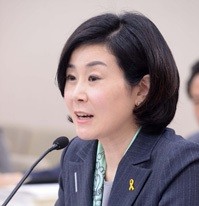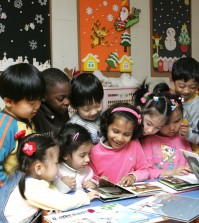- California Assembly OKs highest minimum wage in nation
- S. Korea unveils first graphic cigarette warnings
- US joins with South Korea, Japan in bid to deter North Korea
- LPGA golfer Chun In-gee finally back in action
- S. Korea won’t be top seed in final World Cup qualification round
- US men’s soccer misses 2nd straight Olympics
- US back on track in qualifying with 4-0 win over Guatemala
- High-intensity workout injuries spawn cottage industry
- CDC expands range of Zika mosquitoes into parts of Northeast
- Who knew? ‘The Walking Dead’ is helping families connect
In Korea, 1 out of 20 newborns are multiracial
By Lee Hyo-sik
Nearly one out of 20 newborns in Korea is born into a multiracial family, according to Statistics Korea, Wednesday.
The number of infants born to multiracial couples reached 22,908 in 2012, accounting for 4.7 percent of the total 484,550.
The ratio also stood at 4.7 percent in 2011, up from 4.3 percent in 2010 and 2.9 percent in 2008, indicating that Korea has become an increasingly multiracial society in line with the growing number of international marriages between Koreans and non-Koreans over the years.
Multiracial couples, most of whom reside in rural areas, tend to have more children than Korean couples. The number of multiracial children born from 2008 to 2012 reached 97,701.
International marriages here are mostly between Korean men and women from China or Southeast Asian countries.
In 2012, about 71 percent of grooms in international marriages were Korean, followed by Chinese (9.2 percent), Americans (5.5 percent) and Japanese (5.4 percent). Nearly 30 percent of interracial marriages here involve Chinese brides, followed by Vietnamese (23.3 percent) and Koreans (22.2 percent).
However, the office projects that the ratio of multiracial infants will likely decline in the coming years because fewer Koreans and foreign nationals are tying the knot.
”Since early 2000, many Korean men, mostly living in rural areas, have sought to marry women from other Asian countries because Korean women prefer to live in cities after marriage. About 75 percent of all international marriages here involve a Korean groom and a foreign bride,” a Statistics Korea official said.
But it has become more difficult for Korean men to marry foreign women as the government introduced a set of regulations aimed at preventing ”problematic” international marriages. Stricter rules have also been imposed on issuing F-2 spouse visas, making it harder for foreign women to come to Korea.
In particular, following a series of domestic violence cases against migrant wives, the number of international marriages has increased at a slower rate.
Marriages between Koreans and non-Koreans peaked at 42,356 in 2005, accounting for 13.5 percent of all newly married couples here. But since 2006, the number has consistently fallen.













